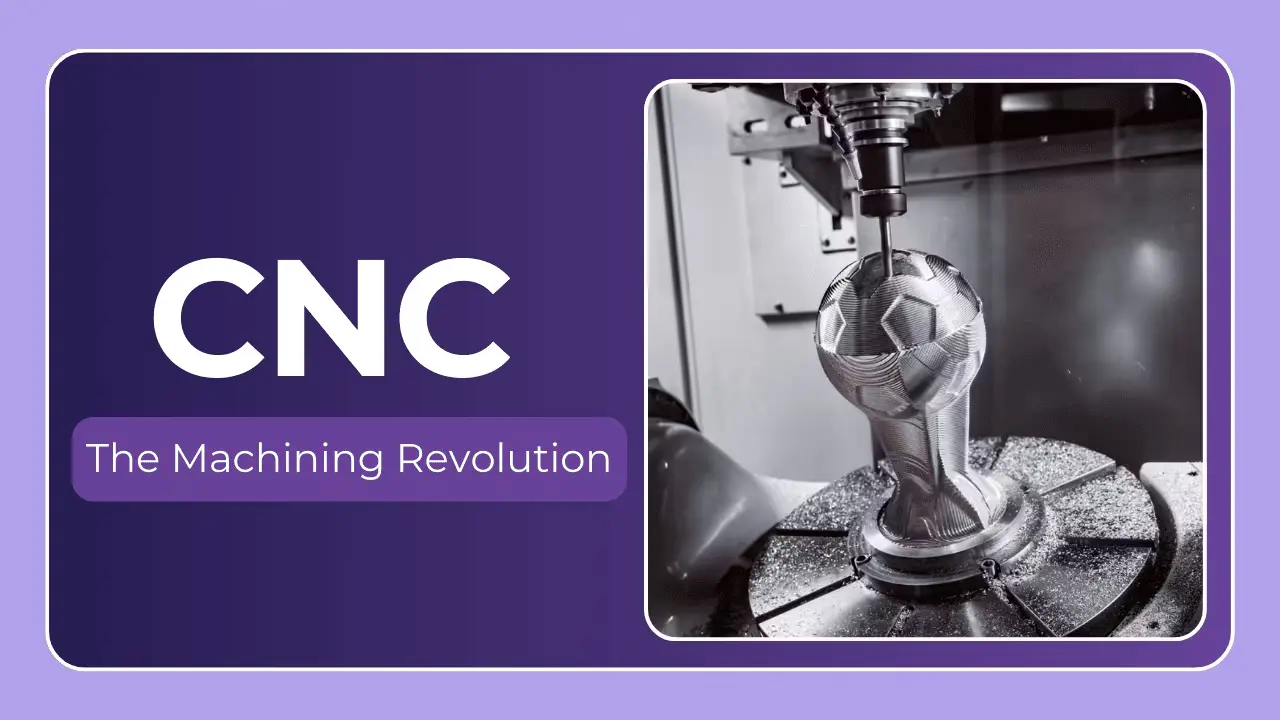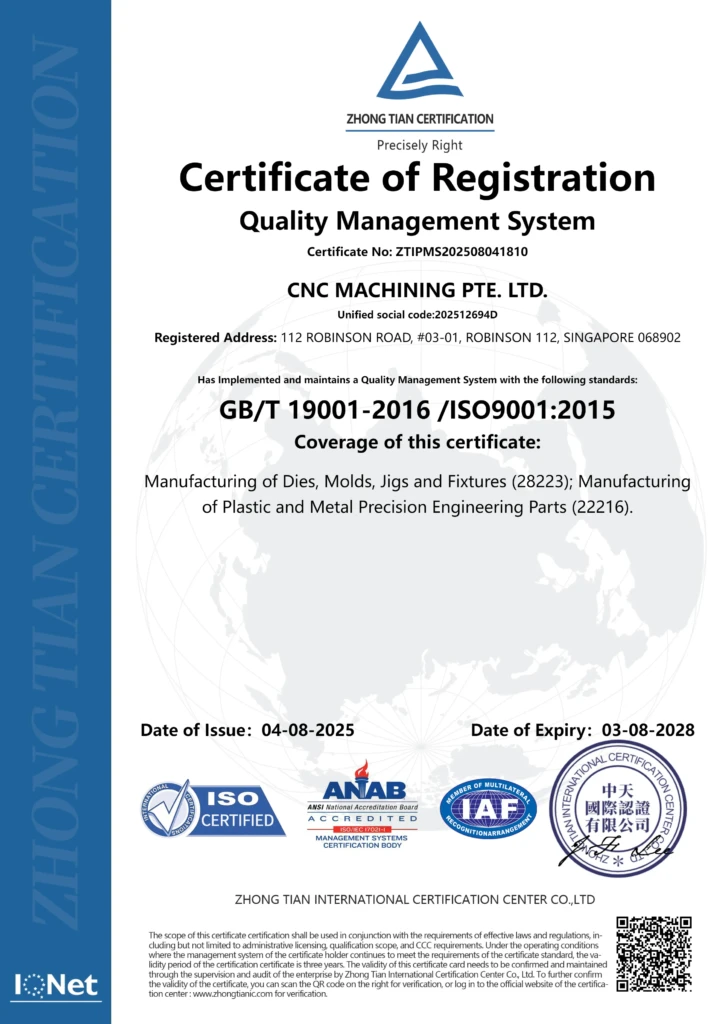In today’s fast-paced manufacturing landscape, producing small batches of precision parts efficiently and cost-effectively is a challenge faced by engineers, purchasers, startup owners, and leaders of multinational companies alike. For production runs under 1000 units, low volume CNC machining emerges as a standout solution, offering flexibility, precision, and significant cost savings over traditional methods like injection molding. At CNC MACHINING PTE. LTD, a professional 5-axis CNC machining factory, we leverage advanced technology and innovative strategies to deliver tailored metal part solutions with one-stop post-processing and finishing services. This blog post dives deep into the economics of low volume CNC machining, compares it to injection molding with a break-even analysis, and unveils five proven strategies to maximize cost efficiency for small batch production.
Why Low Volume CNC Machining Matters
Low volume CNC machining refers to the production of small quantities—typically under 1000 units—of high-precision parts using computer numerical control (CNC) technology. Unlike mass production methods, it’s designed for flexibility, making it ideal for prototyping, custom orders, or short-run manufacturing. For our target audience:
- Engineers need rapid prototypes to test designs.
- Purchasers aim to balance quality and budget while avoiding overstock.
- Startup Owners require scalable solutions without massive upfront investments.
- Multinational Leaders seek agile supply chains to adapt to market shifts.
At CNC MACHINING PTE. LTD, our 5-axis CNC machining capabilities, combined with an online customization platform, empower you to produce metal parts quickly and at competitive prices. But how does this stack up against injection molding? Let’s explore the numbers.
Cost Analysis: Low Volume CNC Machining vs. Injection Molding
When deciding between CNC machining and injection molding for small batches, cost is king. Injection molding excels in high-volume production, but its upfront expenses—namely mold creation—make it less viable for runs under 1000 parts. Low volume CNC machining, by contrast, offers a lower entry cost and faster turnaround. Here’s a detailed comparison:
Breaking Down the Costs
- Low Volume CNC Machining
- Setup Cost: Minimal, often just programming and fixturing (~$500-$1,000).
- Per Unit Cost: Higher due to machining time ($15-$30/part, depending on complexity).
- Total for 100 Units: ~$2,500-$4,000.
- Total for 500 Units: ~$8,500-$16,000.
- Injection Molding
- Mold Cost: High initial investment ($5,000-$20,000, depending on design).
- Per Unit Cost: Low once the mold is made ($1-$5/part).
- Total for 100 Units: ~$5,200-$20,500.
- Total for 500 Units: ~$5,500-$22,500.
The Break-Even Point
The break-even point—where the total cost of CNC machining equals injection molding—typically falls between 500 and 2000 units, influenced by part complexity, material, and mold intricacy. For a simple metal part:
| Batch Size | CNC Machining Cost | Injection Molding Cost | Best Option |
|---|---|---|---|
| 50 | $1,750 | $10,250 | CNC Machining |
| 100 | $2,500 | $10,500 | CNC Machining |
| 500 | $10,500 | $11,500 | CNC Machining |
| 1000 | $20,000 | $15,000 | Injection Molding |
For batches under 1000, CNC machining consistently outperforms injection molding in cost efficiency. Beyond this threshold, injection molding’s economies of scale take over. This makes low volume CNC machining the go-to for small batch production, especially when time-to-market and flexibility are critical.
Five Strategies to Boost Cost Efficiency in Low Volume CNC Machining
To make low volume CNC machining even more economical, we’ve honed five innovative strategies that reduce costs, improve throughput, and maintain precision. Here’s how:
Modular Fixturing
What It Is
Modular fixturing uses interchangeable, standardized components to hold workpieces securely during machining. Unlike custom fixtures, these systems can be reconfigured quickly for different parts.
Why It Works
- Reduced Setup Time: Adjust fixtures in minutes, not hours.
- Lower Costs: Avoid designing and fabricating bespoke fixtures for each job.
- Flexibility: Perfect for small batches with varied geometries.
Real-World Impact
For a 100-part run with multiple setups, modular fixturing can cut setup costs by 30-50%, enhancing cost efficiency without sacrificing quality.
Nested Machining
What It Is
Nested machining involves arranging multiple parts on a single workpiece, machined in one operation, much like puzzle pieces on a sheet.
Why It Works
- Material Savings: Minimize waste by optimizing layout.
- Time Efficiency: Machine several parts simultaneously.
- Scalability: Ideal for small batch production runs.
Real-World Impact
Nesting can reduce material costs by up to 20% and machining time by 15%, making it a cornerstone of low volume CNC machining success.
Tooling Optimization
What It Is
Tooling optimization focuses on selecting the right tools (e.g., end mills, drills) and maintaining them to maximize performance and longevity.
Why It Works
- Reduced Downtime: Fewer tool changes and replacements.
- Lower Costs: High-quality tools last longer, offsetting initial expense.
- Precision: Optimal tools ensure consistent quality.
Real-World Impact
By using coated carbide tools for a 500-part run, you could slash tool-related costs by 25% and boost machining speed by 10%.
CAM Programming Efficiency
What It Is
Computer-aided manufacturing (CAM) programming efficiency involves creating optimized toolpaths to minimize machining time and energy use.
Why It Works
- Faster Cycles: Eliminate redundant movements.
- Energy Savings: Reduce machine runtime.
- Error Reduction: Smarter paths mean fewer mistakes.
Real-World Impact
Efficient CAM programming can shorten cycle times by 20-30%, a game-changer for small batch production timelines.
Batch Scheduling
What It Is
Batch scheduling strategically groups similar parts or materials to run consecutively, minimizing machine setup changes.
Why It Works
- Maximized Utilization: Keep machines running, not idling.
- Reduced Setup Costs: Fewer transitions between jobs.
- Streamlined Workflow: Align production with demand.
Real-World Impact
Smart scheduling can improve machine uptime by 15% and cut setup costs by 10-20%, amplifying cost efficiency.
Why Partner with CNC MACHINING PTE. LTD?
When it comes to low volume CNC machining, CNC MACHINING PTE. LTD stands out as your trusted partner. Here’s why:
- 5-Axis Expertise: Our advanced 5-axis machines handle complex geometries with unmatched precision.
- One-Stop Solution: From machining to finishing (anodizing, plating, etc.), we’ve got you covered.
- Material Versatility: We process most metals—aluminum, steel, titanium, and more.
- Online Customization: Get instant quotes and track your project via our user-friendly platform.
- Competitive Pricing: High-quality results without breaking the bank.
Whether you’re prototyping a new product or fulfilling a niche order, our team delivers small batch solutions that prioritize speed, quality, and cost efficiency.
Conclusion: The Smart Choice for Small Batch Production
For production runs under 1000 parts, low volume CNC machining offers a compelling alternative to injection molding, with lower upfront costs, faster lead times, and greater adaptability. By implementing strategies like modular fixturing, nested machining, tooling optimization, CAM programming efficiency, and batch scheduling, you can further enhance cost efficiency and streamline your workflow. At CNC MACHINING PTE. LTD, we’re committed to turning your vision into reality with precision-engineered metal parts tailored to your needs.
Ready to optimize your next project? Visit our online customization platform or contact us for a free consultation. Let’s build something extraordinary together.





